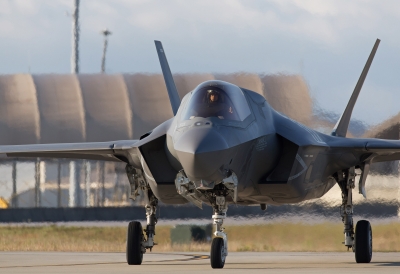
Short (6)
Homeport reassignment Naval Beach Group
Today the transfer of the Naval Group of Beach of its present homeport to the Arsenal of the Carraca in San Fernando has been published.
The Naval Group of Beach is the unit that groups to the LCM (mechanized landing craft) that support the amphibious ships of the Spanish Navy. It had its homeport in the Naval Station of Puntales, in the city of Cadiz. Its new homeport will be located in the Arsenal of La Carraca, in San Fernando. This transfer will be carried out progressively until its effective date on April 1, 2017. Thanks to the liberalization of space in the Arsenal of La Carraca can move the entire Naval Group of Beach and thus be located the unit in its center Logistical support and be located near the main unit of use, Spanish Marine Corps.
The Naval Group of the Beach is the unit whose mission is to support the landing forces in the ship-shore movement and that it carries out this task from the ships of the class Galicia (Galicia L-51 and Castilla L-52) and from the LHD Juan Carlos I (L-61). Each of these ships has the capacity to operate with four LCM (mechanized landing craft) from its flood dam.
SM-3 Block IIA Intercepts Ballistic Missile in Space For First Time
The U.S. Missile Defense Agency, the Japan Ministry of Defense and U.S. Navy successfully used a ship-launched Standard Missile-3 (SM-3) Block IIA to intercept a medium-range ballistic missile target for the first time on Friday night in Hawaii.
In the Feb. 3 test, conducted at about 10:30 p.m. Hawaii Standard Time (3:30 a.m. Eastern Daylight Time, Feb. 4), a target was launched from the Pacific Missile Range Facility at Kauai, according to a MDA statement. USS John Paul Jones (DDG-53) detected and tracked the target missile with its AN/SPY-1D(V) radar and Aegis Combat System Baseline 9.C2 system. The ship fired a SM-3 Block IIA – being jointly developed by the U.S. and Japan – and intercepted the target.
Source: USNI News
AOR "Cantabria" (A-15) departs to join the SNMG-2
The AOR "Cantabria" (A-15) departs Ferrol towards the British Isles to integrate into the SNMG-2 (Standing NATO Maritime Group 2).
The AOR "Cantabria" participate in the multinational exercises "Joint Warrior".
It is the second time in just over a year that the ‘Cantabria’ integrates into SNMGs. The auxiliary oiler has just successfully undergone a series of ship qualification trials to test and certify its readiness state to operate with these multinational naval forces.
Commissioned Transportable hydrographic launch (YGS) "Sondaleza"
Commissioned in the Lista Oficial de Buques de la Armada (Official List of Spanish Navy Ships) the Transportable hydroggraphic lauch (YGS) "Sondaleza" with numeral A-93.
Brazil selects the MBDA Sea Ceptor system for new corvettes program
Brazil has selected the European MBDA Sea Ceptor system for installation on future Tamandaré class corvettes. Tamandaré class corvettes future will be based on the Barosso class corvettes and have a multirole configuration, with capacity for anti-ship and anti-air defense. They will have a main gun and secondary armament.
They will have a displacement of 2,700 tons with a length of just over 100 meters. Will also flight deck and hangar for helicóperos of medium size.
The MBDA Sea Ceptor is an all-weather missile air defense. It has been developed for the Ministry of Defence of United Kingdom to equip the ships of the Royal Navy Type 23, replacing the Sea Wolf system and for new frigates Type 26. It has also been selected by the Royal New Zealand Navy to replace the RIM-7 Sea Sparrow in Anzac class frigates.
Contract signed for first production batch of F-35B aircraft
The Ministry of Defence (MOD) has signed a contract for the first production batch of 4 Lightning II stealth combat aircraft – which will operate from both the Royal Navy’s new aircraft carriers and Royal Air Force (RAF) land bases.
The contract for the F-35B aircraft forms part of the MOD’s investment in Lightning II over the next 5 years to procure an initial 14 of these multi-role fifth generation aircraft, as well as putting in place the necessary support arrangements and infrastructure.
Further contracts will cover the procurement of a range of equipment such as engines.
The news comes as a UK test team has completed initial aircraft handling trials for ASRAAM and Paveway IV on the F-35B aircraft.
Trial rounds, which are identical to the operational weapons, were tested for the first time during a series of flights from the US Navy’s test facility at Patuxent River Naval Air Station in Maryland.
These initial tests are an important step in integrating weapons onto the F-35B, allowing test pilots to understand how they affect the way the aircraft performs and handles.
The aircraft are short take off and vertical landing (STOVL) and feature the latest stealth capabilities alongside intelligence, surveillance, target acquisition and reconnaissance (ISTAR) technology.
Most popular
-
LANDING HELICOPTER DOCK (LHD) JUAN CARLOS I (L-61)
Read 55619 times
-
LPD "GALICIA" CLASS - LANDING PLATFORM DOCK
Read 18373 times
-
AOR "PATIÑO" REPLENISHMENT OILER
Read 18031 times
-
"SEGURA" CLASS MINEHUNTERS
Read 13751 times
-
BAM "METEORO" CLASS OFFSHORE PATROL VESSEL
Read 9560 times
-
"SANTA MARÍA" CLASS FRIGATE
Read 8859 times
-
AOR "CANTABRIA" REPLENISHMENT OILER
Read 7720 times
-
"ALVARO DE BAZAN" CLASS FRIGATE (F-100)
Read 6789 times
-
THE UNITAS MULTINATIONAL EXERCISE BEGINS IN PERU WATERS
Read 6639 times
-
"ISAAC PERAL" CLASS SUBMARINE (S-80)
Read 6445 times







